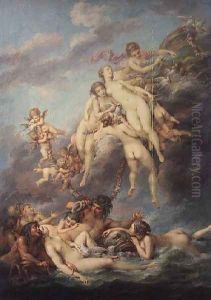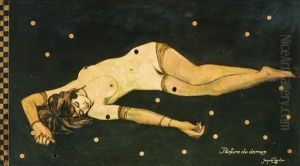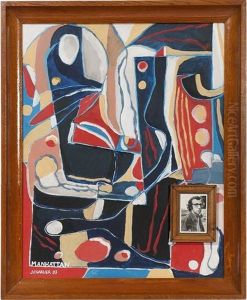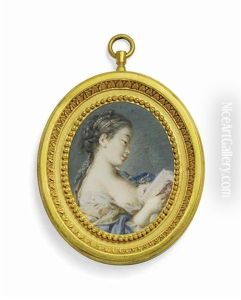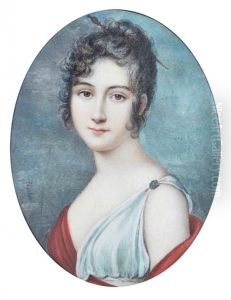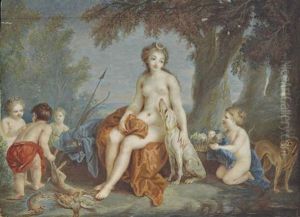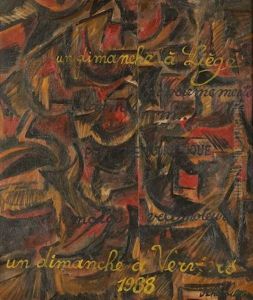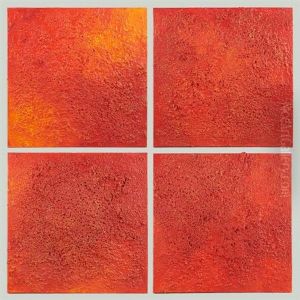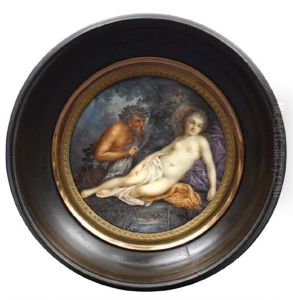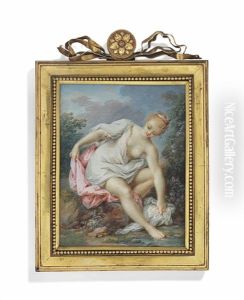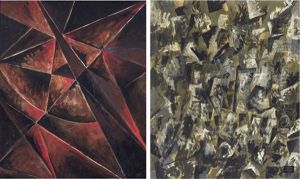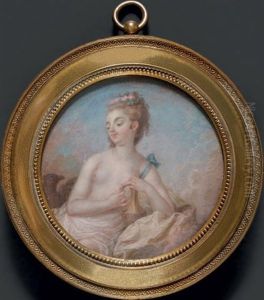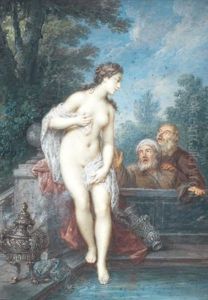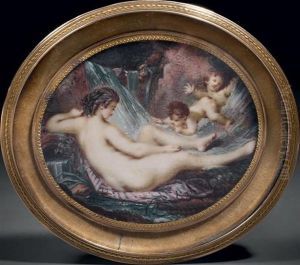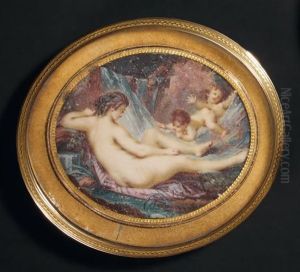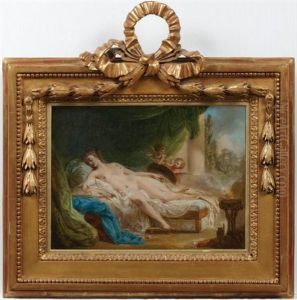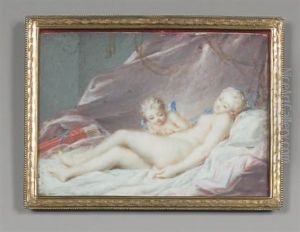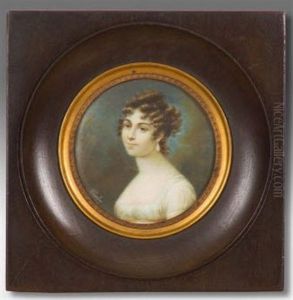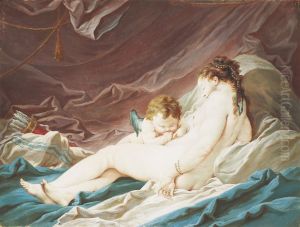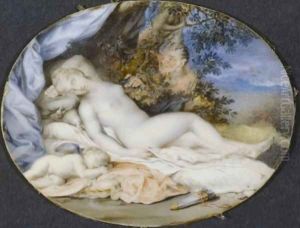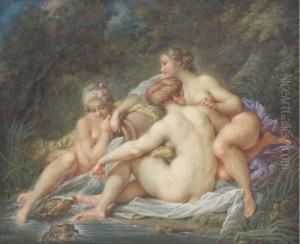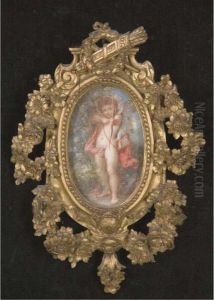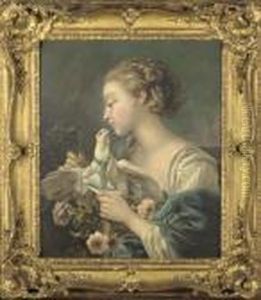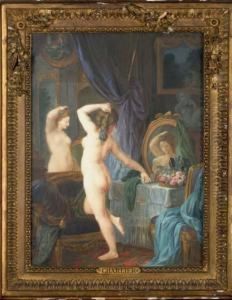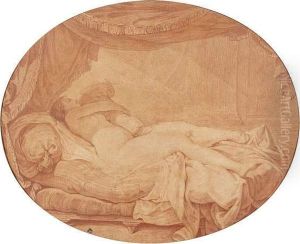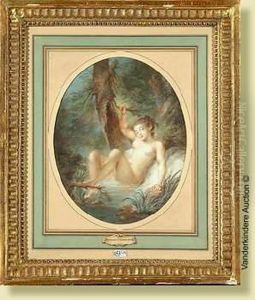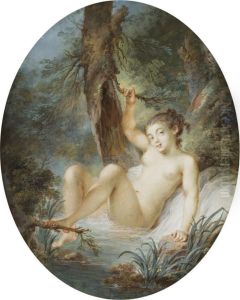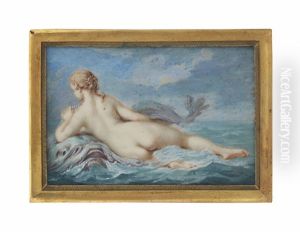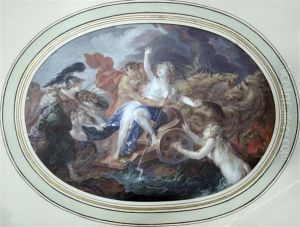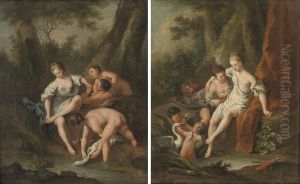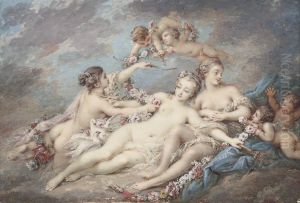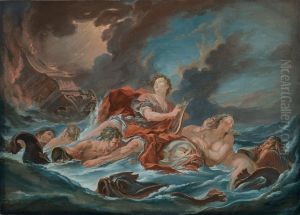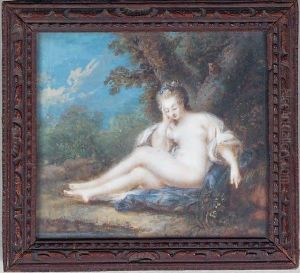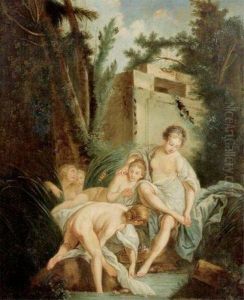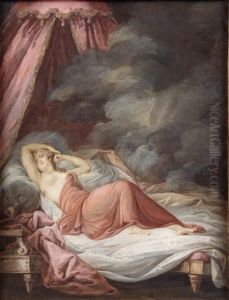Jacques Charlier Paintings
Jacques Charlier is a multifaceted Belgian artist whose work spans several decades, beginning in the late 1950s. Born in 1939 in Liège, Belgium, Charlier's artistic journey reflects a diverse exploration of styles, mediums, and themes, making him a versatile figure in the contemporary art world. His work encompasses painting, sculpture, photography, drawing, and conceptual art, showcasing a playful yet critical approach to art and its institutions.
Charlier's early career in the 1960s and 1970s was marked by his participation in the vibrant European art scene, where he engaged with movements such as Pop Art and Conceptual Art. He is known for his ironic and often humorous critique of the art world, blending pop culture references with a deep understanding of art history. His series of photographic works parodying the art world and its figures are among his most recognized contributions, cleverly commenting on the commodification of art and the artist's role within this ecosystem.
Throughout the 1980s and 1990s, Charlier continued to evolve, refusing to be pigeonholed into a single style or medium. His work during these decades included environmental art and public interventions, highlighting his commitment to engaging with broader social and political issues through art. Charlier's ability to adapt and respond to changing times is evident in his use of digital technology and new media in his more recent works, exploring the impact of technology on society and the arts.
Despite his significant contributions to contemporary art, Jacques Charlier has often chosen to remain outside the mainstream art market, which has allowed him to maintain a critical distance and authenticity in his work. His exhibitions have spanned Europe and beyond, though he is perhaps best known in Francophone countries and among art insiders.
As of my last update, Jacques Charlier continues to work and live in Belgium, where he remains an influential figure in the art community. His legacy includes not only his vast and varied body of work but also his influence on younger generations of artists, encouraging them to question and transcend the boundaries of traditional art forms.
